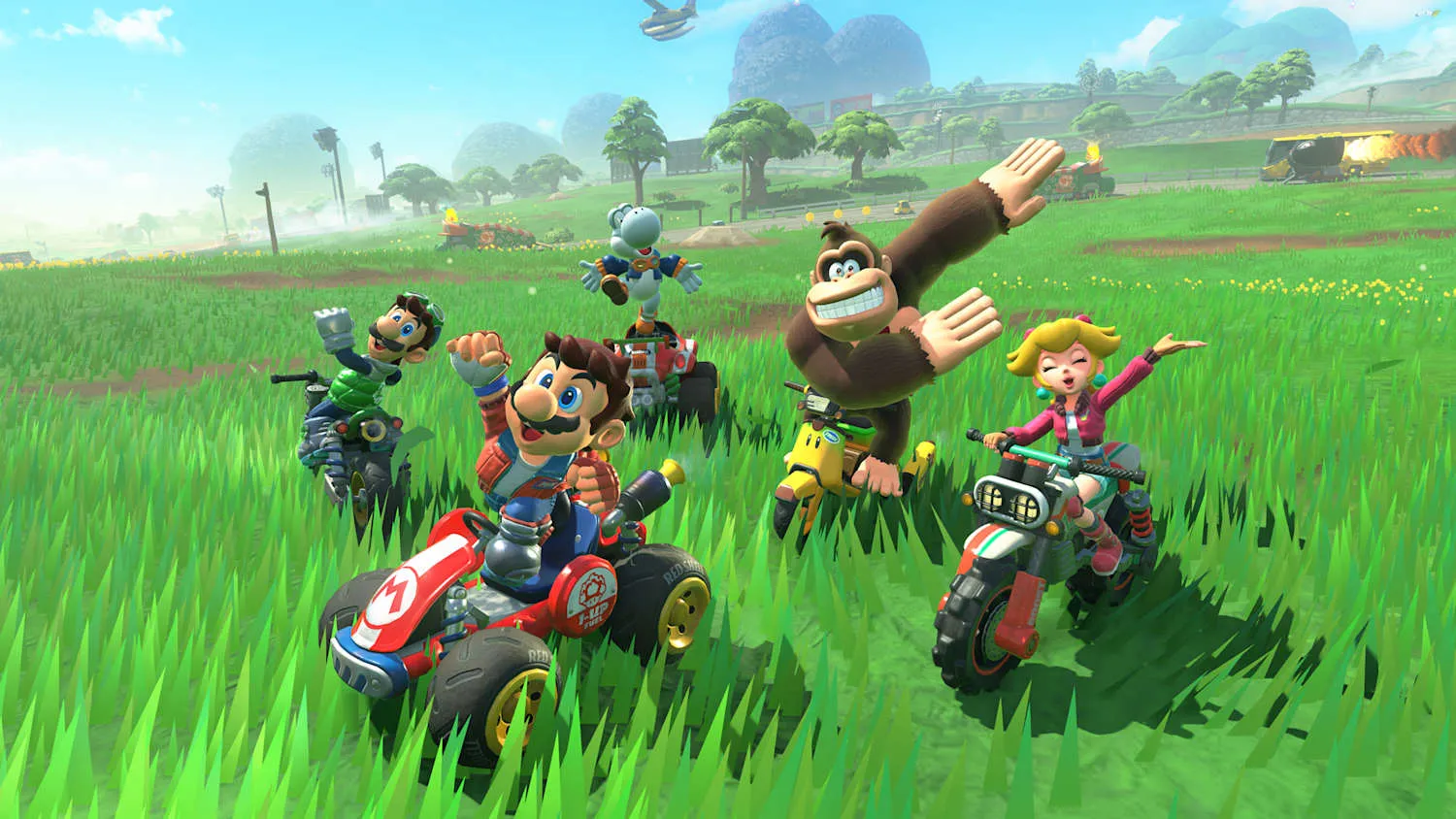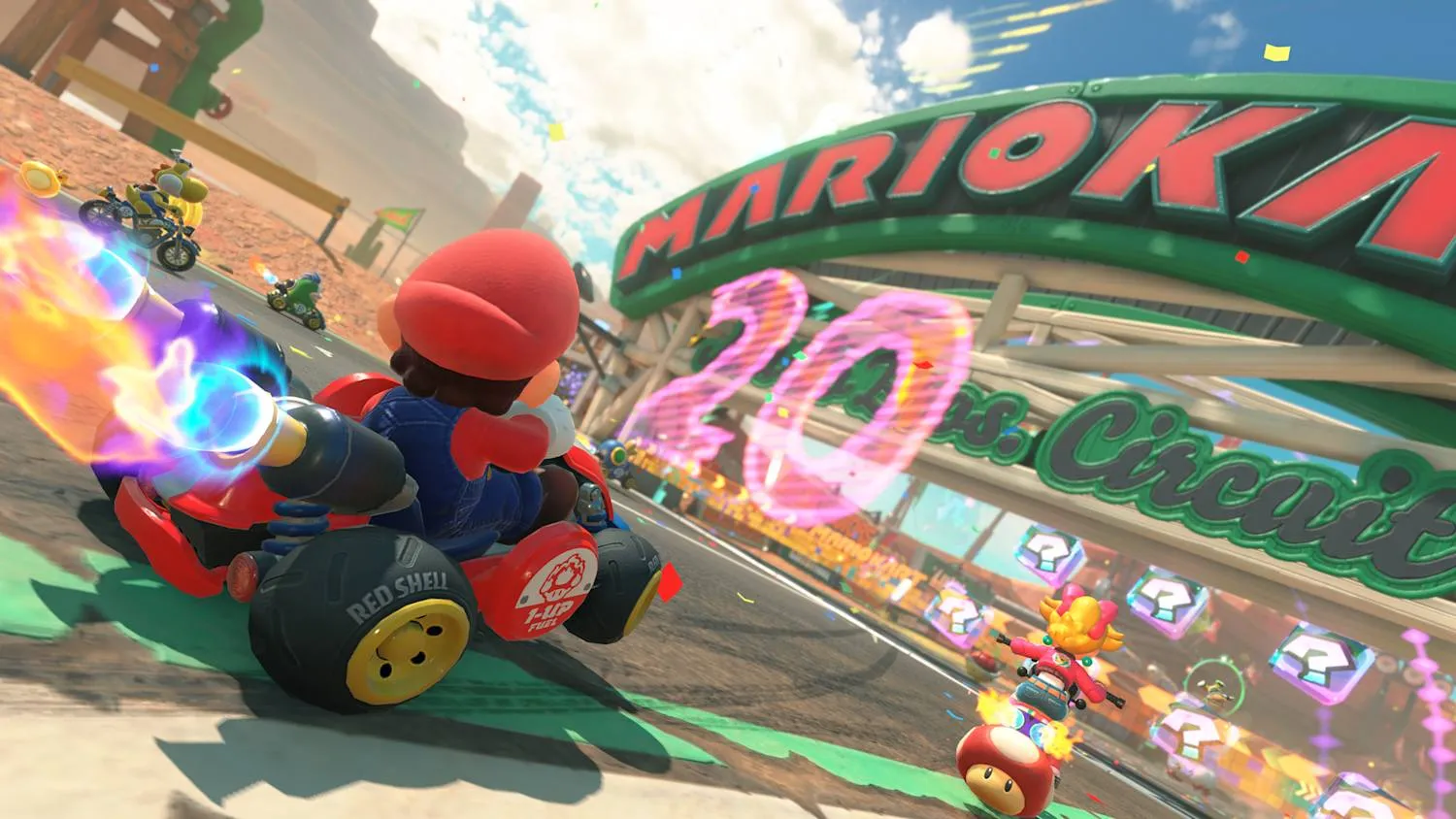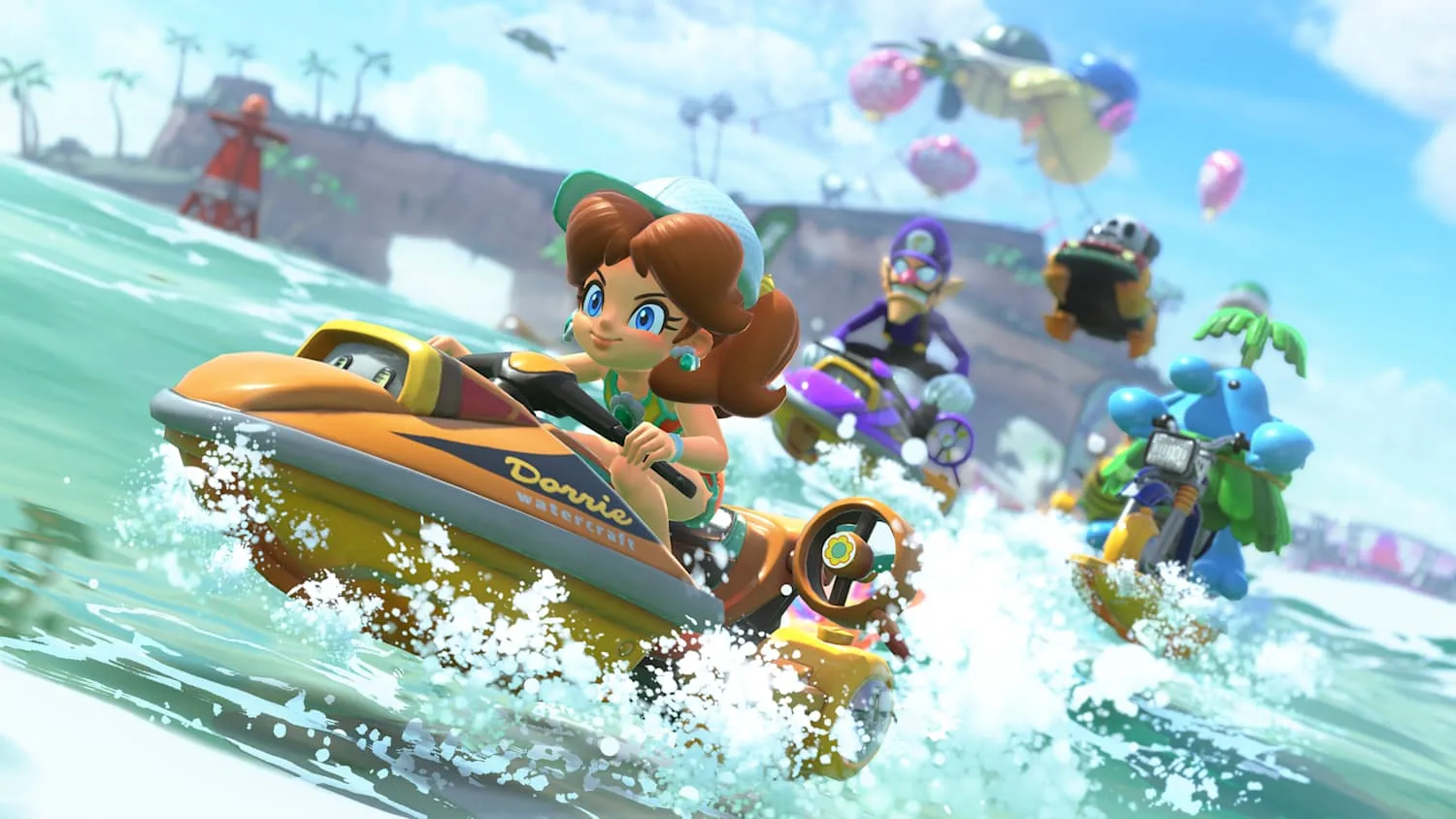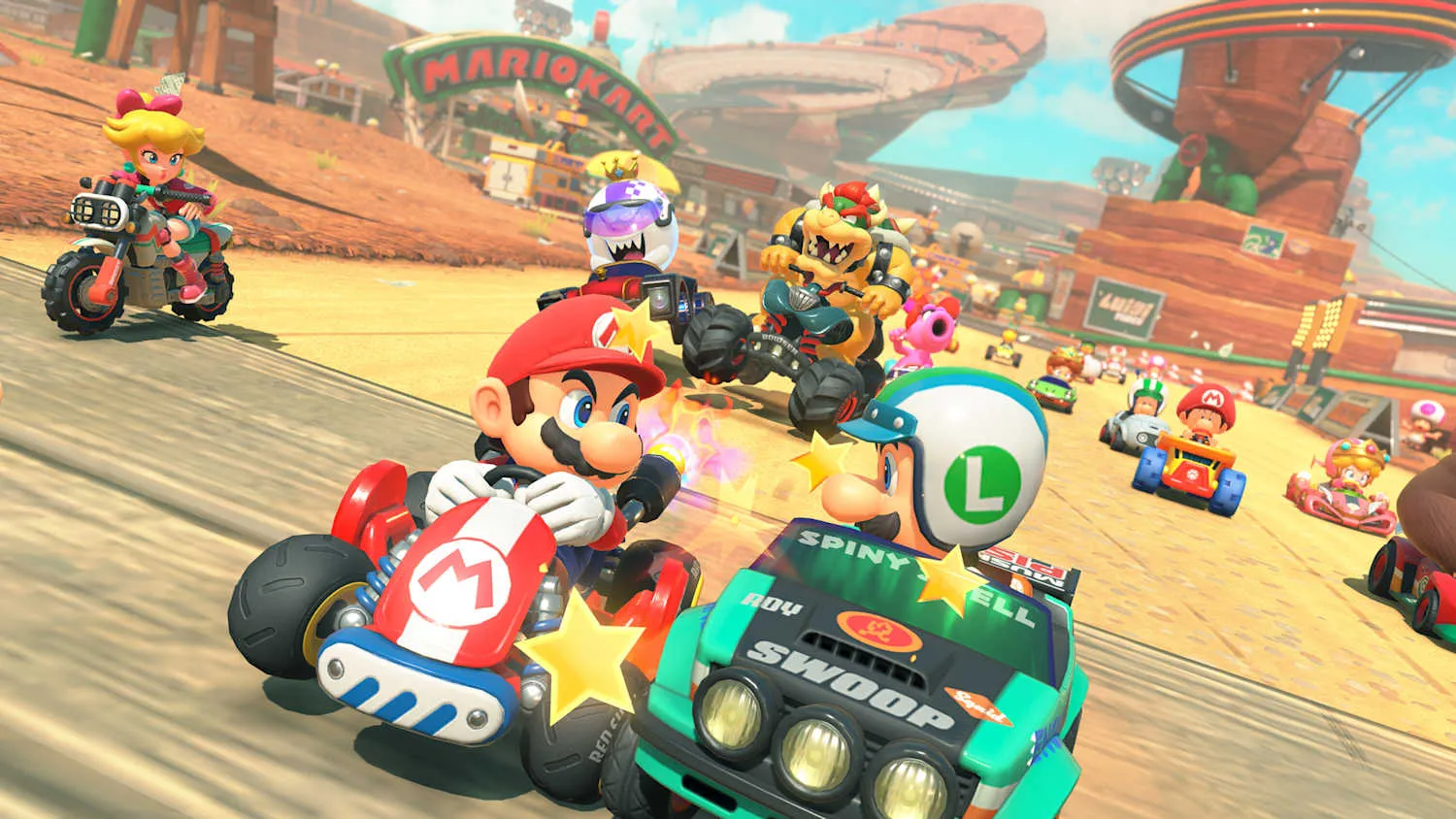The arrival of a new Nintendo console is often heralded by the familiar, joyous roar of go-kart engines. Mario Kart World carries that tradition onto the Switch 2, but it arrives with an ambition that extends far beyond a simple graphical upgrade. This is not merely a collection of courses; it is a persistent, interconnected world where every track is a destination.
The core design philosophy has shifted from a curated menu of races to an explorable landscape you inhabit between competitions. This change in structure, coupled with an expanded scale featuring 24-racer events and a staggering roster, signals a foundational evolution. The series has always been defined by the controlled chaos of individual races.
Mario Kart World poses a new question: what happens when the space between those moments of mayhem becomes a place you can freely navigate? It is a bold attempt to re-contextualize one of gaming’s most beloved formulas, moving it from a pure arcade experience toward something with a greater sense of place and presence. The familiar is here, but it is now part of a much larger whole.
The Grammar of the Race
At its heart, the rubber still meets the road with that quintessential Mario Kart feel, a perfect blend of weighty momentum and responsive arcade turning. Yet, this familiar foundation is immediately strained by the sheer bedlam of 24 racers jostling for position. The increase in density makes every straightaway a potential warzone.
To counteract this, the game introduces a new vocabulary of movement. Mechanics like the charge jump and subsequent wall-riding are not mere gimmicks; they are player-driven choices that create new lines through a course, much like a traversal tool in an action game opening up a new path.
Mastering these skills introduces a clear and rewarding skill gap, allowing dedicated players to impose their will upon the track. The system’s only stumble is a slightly clumsy control scheme that occasionally mistakes an intended drift for a jump, a point of friction in an otherwise fluid set of new actions.
This enhanced emphasis on technical skill creates a fascinating tension with the series’ signature agent of chaos: the item box. With more players, the frequency of race-altering items like the Blue Shell feels amplified, making a lead more precarious than ever.
This is a design choice that ensures no one is ever truly safe, preserving the party-game accessibility. New items add their own tactical wrinkles. The Gold Shell is a brilliant addition, functioning as both an offensive weapon and a tool for personal gain as it litters the track with coins for its user.
The returning Mega Mushroom offers a brief, glorious power trip, a blunt instrument for clearing a path through the dense pack of rivals. The on-track experience becomes a richer, more complex conversation between calculated mastery and delightful pandemonium.
Every Race a Journey
Mario Kart World fundamentally alters the narrative structure of a race by abandoning the traditional three-lap circuit. Each competition is now a linear progression, a point-to-point journey that carries you across distinct regions of the world map.
This transforms every race from a repetitive loop into a short story with a clear beginning, middle, and end. The mechanical execution of this idea is nearly invisible; transitions between named courses are seamless, with a brief rolling start propelling you into the next leg of your Grand Prix. This design choice makes a cup feel less like a playlist of four separate songs and more like a single, cohesive suite, where each piece flows logically into the next.
The environments themselves are active participants in this storytelling. Courses are not static backdrops but dynamic, evolving spaces. DK Spaceport is a masterclass in this, beginning as a simple construction site before escalating into a frantic battle against a giant, barrel-hurling robot, directly referencing the escalating challenge of its arcade namesake.
This kinetic, dangerous energy is then beautifully contrasted by the serene flow of a track like Cheep Cheep Falls, which takes you on a tranquil tour of temples and maple groves. The game’s ability to transition flawlessly between ground, anti-gravity, and aquatic sections reinforces this sense of place. The water physics, in particular, feel distinct and deliberate, evoking the satisfying weight and motion of classics like Wave Race. These are not just racetracks; they are lived-in spaces with their own character and rhythm.
The Beautiful, Empty Kingdom
On paper, the Free Roam mode is a dream fulfilled: a seamless, open-world Mushroom Kingdom that players can finally explore at their leisure. The ambition is clear, drawing parallels to the successful structure of games like Forza Horizon, where the world itself is as much the star as the events within it.
Being able to drive from the sun-drenched beaches of Cheep Cheep Falls to the metallic girders of DK Spaceport without a loading screen is a remarkable technical feat. It presents a fantasy of ultimate player freedom, offering a map screen with fast-travel points that suggests a space ripe for discovery and emergent adventure. This is the promise of Mario Kart World: a playset of boundless potential.
The reality of interacting with this space, however, is more complicated. The world is populated with activities, but they often feel like items on a checklist rather than organic opportunities. P-Switch challenges dot the landscape, offering tasks that range from simple time trials to surprisingly difficult kart parkour puzzles that test vehicle control in new ways.
You might be ambushed by a rival for a takedown challenge or tasked with finding “Dash Food” to unlock one of the game’s many costumes. The problem is that these activities rarely feel connected to a living world. They are discrete, isolated tasks whose primary motivation is extrinsic—completing them gives you a cosmetic reward to be used elsewhere.
This is the core dissonance of the open world: it provides freedom but offers few meaningful ways to express it. Unlike the best sandboxes, its systems do not interact in surprising ways; the world is largely static, a beautiful but shallow container for the racetracks it holds.
The activities lack the intrinsic thrill of a 24-player race, making exploration feel more like a chore for completionists than a compelling adventure in its own right. For players who enjoy creating their own fun, the fully-featured Photo Mode is a standout success, leveraging the gorgeous scenery to great effect. For most, however, this vast, beautiful kingdom will likely serve as little more than a glorified waiting room—a stunning backdrop for the real action, and a constant reminder of untapped potential.
The Narrative Engine
While the open world struggles to justify its own existence, the new Knockout Tour mode is an unqualified triumph and the true heart of this new Mario Kart. By borrowing the shrinking-circle structure of a battle royale, it creates a powerful narrative engine that generates tension, drama, and immense satisfaction.
The format is simple: 24 racers begin, but only the top 20 advance past the first checkpoint, then 16, and so on, until a final, frantic four-way race for the crown. The consequence of failure is no longer a small loss of points; it is absolute elimination. This single change gives every action on the track a profound weight.
A single misplaced shell or a poorly timed drift can be the difference between survival and spectating. The feeling of scraping by in 20th place, only to fight your way to a win in the final round, is a more compelling story than any scripted campaign could offer.
The game’s other modes feel more traditional, but benefit from the new scale. The reimagined Grand Prix offers a more relaxed, journey-like experience that complements Knockout Tour’s intensity. The classic battle modes, Balloon Battle and Coin Runners, are transformed by the 24-player count. They become less about precise duels and more about large-scale, chaotic skirmishes where survival is a constant struggle.
This multiplayer mayhem is further amplified by clever social integration, like the Switch 2 Camera feature that displays your opponents’ live reactions. Seeing a friend’s face tumble across your screen after they drive over your banana peel adds a wonderfully personal and hilarious layer to the proceedings, grounding the digital chaos in real-world emotion.
Expression Over Optimization
Mario Kart World makes a bold choice in its approach to player identity, consciously trading mechanical depth for aesthetic breadth. The intricate system of kart, wheel, and glider combinations from past entries is gone. In its place is a simplified model where stats are tied directly to character weight class.
This decision effectively levels the playing field, removing the intimidating “meta” of optimal builds and placing the emphasis purely on in-race execution. While longtime veterans may mourn the loss of a deep customization system, this streamlining makes the game more immediately readable and accessible.
The impulse for personalization has been rerouted into two main avenues. The first is the truly encyclopedic roster, which goes far beyond the usual suspects to include dozens of deep-cut characters, allowing players to find an identity in obscurity or absurdity.
The second, and more significant, is the vast library of unlockable costumes and kart stickers. In this new ecosystem, your identity is not defined by your kart’s stats, but by its look. Earning the ridiculous “Wampire” Waluigi outfit becomes the new status symbol, a cosmetic trophy that speaks to your dedication. It is a clear philosophical shift: who you are on the track is now less about what your kart can do and more about who you choose to be.
The Review
Mario Kart World
Mario Kart World is a game of brilliant contradictions. The on-track racing is the best the series has ever been, with deeper mechanics and imaginative course design. The new Knockout Tour mode is an absolute triumph, a masterclass in tension. However, the game’s central pillar, its ambitious open world, proves to be a beautiful but disappointingly hollow endeavor. Ultimately, the sheer excellence of the core racing and its stellar new mode provides more than enough fuel to make this an essential, if slightly flawed, evolution for the legendary franchise.
PROS
- Knockout Tour is a phenomenal and highly replayable new mode.
- Core racing mechanics are deep, polished, and incredibly fun.
- Imaginative, dynamic, and visually stunning track designs.
- A massive roster of characters offers great variety.
CONS
- The flagship open-world feature feels sparse and underdeveloped.
- Activities within the open world lack the excitement of the core racing.
- The removal of deep mechanical kart customization may disappoint some fans.



















































